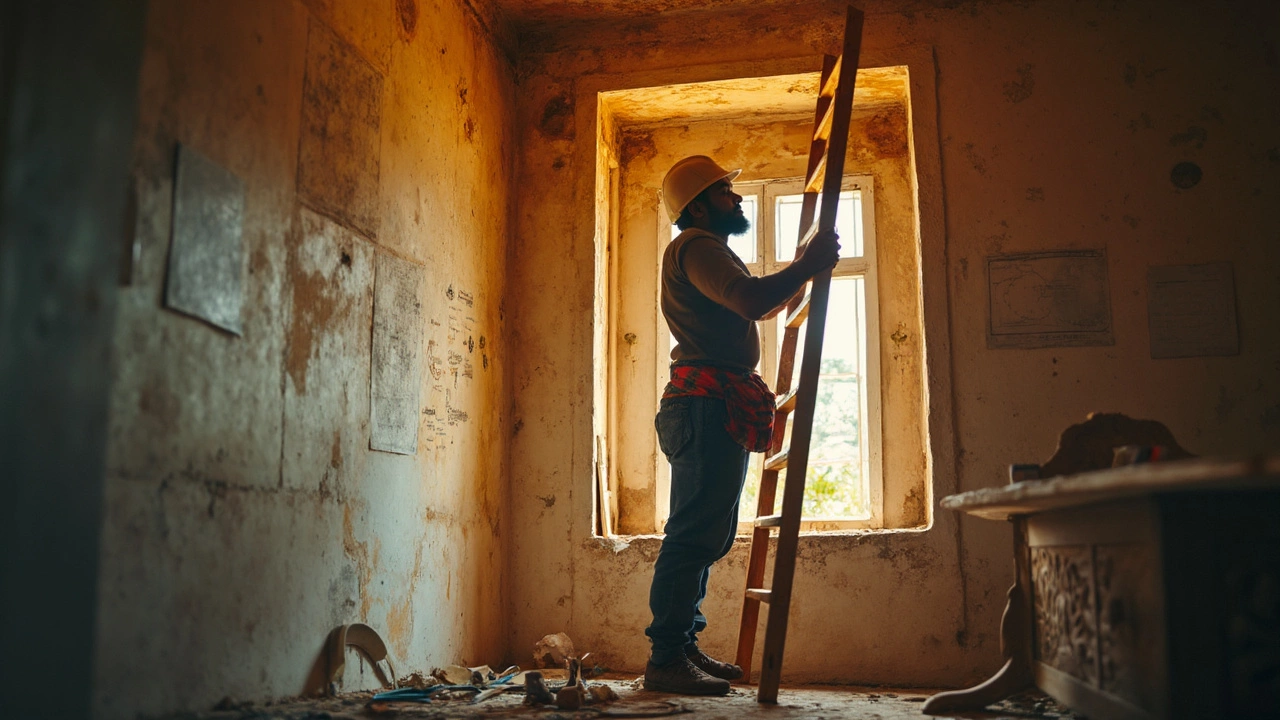So, you're ready to dive into a home remodel, but where on Earth do you start? Let's get real: it's all about the order. You can't paint the walls if there's drywall dust flying, right?
First things first, you gotta assess and plan. This isn't the time for daydreaming; it's planning with precision. Think of this stage as laying the groundwork. Budget, timelines, and the big overall design idea need to be in sync.
Next, tackle the structural and mechanical stuff. We're talking plumbing, electrical—basically things you'll never want to mess up once the cosmetics are underway. Trust me, you don’t want to be ripping up your cool new tiles to fix a leaking pipe.
Assess and Plan
Nailing down your remodeling order starts with a solid plan. Think of this as the 'survey the land' part of your home renovation. You're establishing the scope of your project here—defining what you want versus what your budget can realistically handle.
Define Your Goals
Start by asking yourself a few honest questions. Are you updating the space for resale value or making it your forever home? Your answers will shape many decisions down the road. Changes aimed at boosting resale value might prioritize different features compared to a renovation designed for personal comfort.
Set a Budget
Before diving into any work, you’ve gotta know how much you're willing to burn. A typical kitchen remodel, for example, might cost between $15,000 to $50,000. To avoid blowing up the budget, aim to set aside about 10-20% extra for surprises. Trust me, those "extras" always pop up.
Research and Planning
Once the budget is in check, get your research game on. Scour through magazines, Pinterest boards, and renovation blogs for ideas—don't hold back. More info means better choices. And don't forget to measure every inch of the space twice, at least. You'd be surprised how often misjudged dimensions throw a wrench into the plan.
Setting a Timeline
Timelines are your best friend here. Even a small bathroom upgrade can easily take 4-6 weeks. On a piece of paper, map out the duration for each task. This provides an overview to balance excitement with realism. Keep it flexible, but orderly—much like a well-scheduled road trip.
Consulting the Pros
Lastly, unless you're a skilled DIYer, get some pros on board. Architects, contractors, or interior designers bring experience and can spot potential issues you haven't thought about. They might even save you money, helping navigate material costs and avoid rookie mistakes.
So, now that you've got your plan, you're ready to move forward with your home renovations like the pro you are!
Structural and Mechanical Work
This is where the rubber meets the road in your remodeling order. It's all about getting the gritty, essential stuff done right. Before you even think of slapping paint on the walls or picking out furniture, you've got to address the bones of the house.
Get the Plumbing Right
First up, plumbing. If you’re looking to move a sink or install a new bathroom, this is the moment. It’s not glamorous, but ensuring pipes and drains are up to snuff will save headaches later. Consider installing modern, water-efficient fixtures to save on bills long-term.
Don't Neglect Electrical
Next, tackle your electrical systems. Old wiring needs updating, especially in older homes. Think about your future needs, like smart home systems or added outlets for electronics. Hiring a qualified electrician is crucial; they’ll ensure everything complies with safety codes.
Structural Changes Matter
If you plan on knocking down walls for an open concept—or adding windows for more light—get it done now. This is where having a structural engineer check your plans can pay off. The goal is to avoid surprises, like finding a support wall in the wrong place.
Insulation
While not the most exciting part, updating your insulation keeps energy bills down and makes your home comfortable. Think of it as long-term investment in comfort.
| Task | Average Costs in NZD |
|---|---|
| Plumbing Upgrades | 2,000 to 10,000 |
| Electrical Work | 3,000 to 15,000 |
| Structural Changes | 5,000 to 30,000 |
| Insulation | 2,000 to 7,000 |
Think of all this work as the foundation stone of your home renovations. Getting these right means you’ll have a trouble-free, beautiful space to enjoy once all the cosmetic work is done.

Walls and Flooring
Alright, you've got the plumbing and electrical squared away. What's next on your remodeling order list? Time to move onto the walls and flooring. This stage can make a dramatic difference in your home's appearance. Getting these right sets the perfect canvas for the rest of your project.
Getting the Walls Ready
First off, you'll want to focus on prepping and finishing your walls. It's important to handle any drywall installation or repairs after the messy construction tasks are out of the way. Trust me, you don’t want dust settling on fresh paint.
Plan your wall finishes carefully. Textured walls add character, but they can be trickier to paint. If you prefer smooth walls, make sure your drywall is well-sanded and primed before painting. And speaking of paint, neutrals give timeless looks but a splash of color here and there keeps it interesting.
Choosing the Right Flooring
Flooring is more than just something to walk on. It plays a huge role in the overall vibe of your home. So, ask yourself, are you going for comfort, elegance, or durability? Popular options like hardwood give a classic look, but laminate or vinyl might suit busy homes better.
- Laminate: Budget-friendly and easy to install—great for families with pets.
- Hardwood: Timeless elegance but needs love (and sometimes hefty maintenance).
- Tile: Water-resistant, perfect for bathrooms and kitchens.
Timing is Key
Here's the kicker, timing matters. Lay your flooring last if you can. This way, you avoid it getting scuffed or ruined by other projects. Once the paint dries and dust settles, that’s your green light to roll out the flooring.
Thinking about mixing materials? A popular trend is to blend hardwood with tiles in different rooms, creating a neat transition that visually defines spaces without walls. Plus, it adds a dash of style to your renovation.
Finishing Touches
Alright, the heavy lifting is done. Now it's time for the fun part—the finishing touches. This is where your home really tells your story. It’s the icing on the cake, the bow on the gift. But don’t be fooled; these details can make or break the whole look.
Perfecting the Colors
You’ve picked out the paint colors ages ago, but now's when they finally go up. Choose finishes that fit the vibe you’re going for—matte for a soft look, or gloss for a bit of shine. Pro tip: test those colors on a small area first. It’s way easier to change a swatch than an entire room, right?
Fabulous Flooring
Flooring is like the shoes for your home. Whether it’s sleek hardwood, cozy carpet, or trendy tiles, make sure it’s something you'll love. And yes, think about wear and tear—something that's pet and kid-friendly if that's important.
Lighting Matters
Lighting isn't just about seeing in the dark. It sets the mood. Hop on over to the nearest light fixture store and take your pick. Mix in some overhead lights with table and floor lamps for that perfect ambience. Dimmer switches? Total game changer.
The Small Stuff That Counts
Here’s where the personality really pops. Artwork, throw pillows, rugs, and those quirky knick-knacks—go wild! These are the pieces that spark conversations and make your space uniquely yours. Keep it organized though; clutter isn't cool.
| Item | Average Cost (USD) |
|---|---|
| Lighting Fixtures | 200 - 2,000 |
| Paint | 20 - 70 per gallon |
| Flooring | 3 - 10 per square foot |
So there you have it, the final lap in your home renovations journey. These finishing touches are your chance to make your mark. Take your time and relish the ride. Once it’s all done, step back and enjoy the living room you've brought to life.

